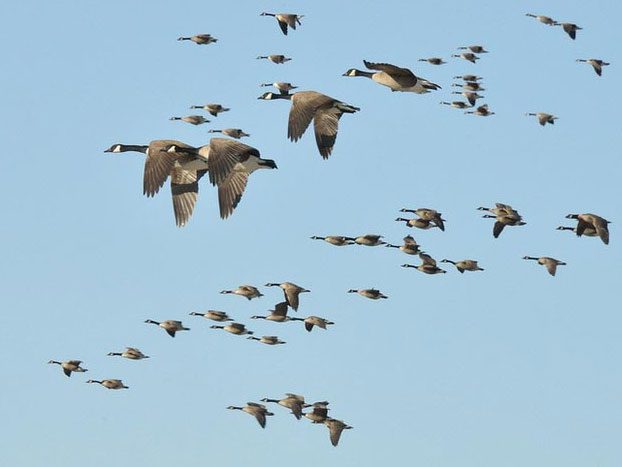Blue jays (Cyanocitta cristata) are among the most recognized and beloved birds in North America. Known for their striking blue plumage and distinctive calls, these intelligent and adaptable creatures exhibit fascinating migration patterns that are both complex and variable. In this article, we will delve into the migration behaviors of blue jays, examining the factors that influence their movements, the routes they take, and the ecological significance of their migrations.
Understanding Blue Jay Migration
Migration in birds is typically driven by the search for food, suitable breeding grounds, and favorable weather conditions. Blue jays are primarily resident birds, which means many of them do not migrate at all. However, some blue jays do engage in migratory behavior, often in response to resource availability and environmental factors.
Types of Migration: Resident vs. Migratory
- Resident Population: A significant number of blue jays remain in their breeding territories year-round, particularly in areas with sufficient food sources.
- Migratory Population: Some blue jays engage in seasonal movements, particularly those in the northern parts of their range, where harsh winters can limit food availability.
Factors Influencing Migration
The migration patterns of blue jays are influenced by several key factors:
- Food Availability: Blue jays primarily feed on acorns, nuts, seeds, and berries. The availability of these food sources can dictate whether they stay in their breeding territories or migrate.
- Weather Conditions: Severe winter conditions can prompt blue jays to migrate southward in search of milder climates.
- Breeding Habits: After breeding season, young blue jays may move to find new territories, contributing to migratory behaviors.
Migration Routes and Patterns
Blue jay migration is characterized by its irregularity and variability. Unlike many species that follow fixed migratory routes, blue jays often take advantage of local environmental conditions to determine their paths. Here are some insights into their migration routes:
General Migration Patterns

Research indicates that blue jays typically migrate in a southward direction during the fall months, particularly from late September to early November. Their migration can be influenced by:
- Geographic Location: Northern populations are more likely to migrate than those in the southern U.S.
- Seasonal Changes: Blue jays may migrate based on the timing of food depletion or the onset of cold weather.
Case Study: The Great Blue Jay Migration

In 2018, researchers conducted a study tracking blue jays using advanced GPS technology. This study found that:
- Some blue jays traveled over 1,000 miles from their breeding grounds in Canada to wintering areas in the southeastern U.S.
- Migration routes varied significantly among individuals, with some taking a direct path and others making detours to exploit food sources.
- Weather patterns significantly influenced the timing and success of their migrations.
The Role of Blue Jays in Ecosystems
Migration plays a critical role in the ecological dynamics of blue jays. Their movements are not only vital for their survival but also contribute to the health of the ecosystems they inhabit.
Seed Dispersal and Forest Regeneration
Blue jays are known to be important seed dispersers, particularly of oak trees. Their feeding habits contribute to forest regeneration in several ways:
- Acorn Storage: Blue jays often cache acorns, burying them in various locations. This behavior helps to plant new oak trees when they forget some of their caches.
- Supporting Biodiversity: By facilitating oak regeneration, blue jays contribute to the overall biodiversity of forest ecosystems.
Indicators of Environmental Health
As adaptable species, blue jays can serve as indicators of environmental health. Changes in their migration patterns may signal shifts in climate or habitat quality:
- Monitoring Climate Change: Variations in migration timing can reflect broader climatic changes affecting food availability and habitat conditions.
- Habitat Preservation: Protecting the habitats of blue jays ensures that they can continue to thrive and fulfill their ecological roles.
Conservation and Future Research
Understanding blue jay migration patterns is essential for their conservation. With climate change and habitat destruction posing significant threats, ongoing research is vital to ensure that these birds continue to thrive.
Conservation Efforts
Several initiatives aim to protect blue jays and their habitats:
- Habitat Restoration: Efforts to restore native forests support blue jay populations by providing food and nesting sites.
- Public Awareness: Educating communities about the importance of blue jays can foster support for conservation efforts.
The Need for Ongoing Research

Future research should focus on:
- Tracking Migration Patterns: Utilizing technology to gather more data on migration routes and behaviors.
- Studying Climate Impacts: Investigating how climate change affects food sources and habitats used by blue jays.
Conclusion: The Journey of the Blue Jay

Blue jays are remarkable birds whose migration patterns reveal the complexities of avian behavior and ecology. While many blue jays remain in their territories year-round, those that do migrate demonstrate adaptability in response to environmental factors. Their role as seed dispersers highlights their importance in maintaining healthy ecosystems. As climate change and habitat loss threaten their populations, understanding and protecting blue jays becomes increasingly vital. Through ongoing research and conservation efforts, we can ensure that these beautiful birds continue to thrive in the wild, enriching the natural landscapes they inhabit.


